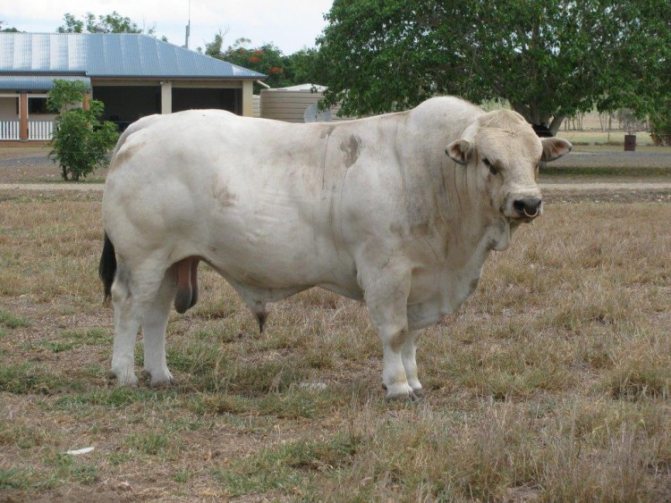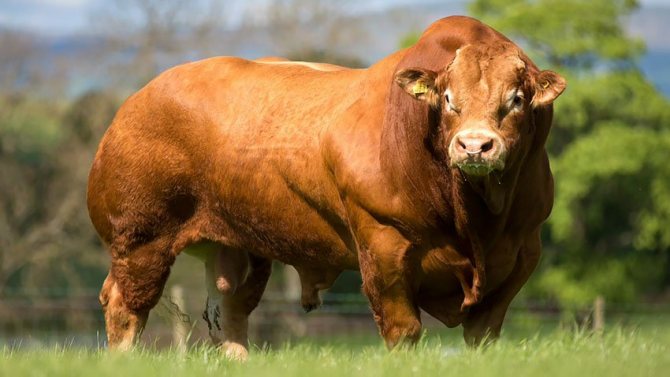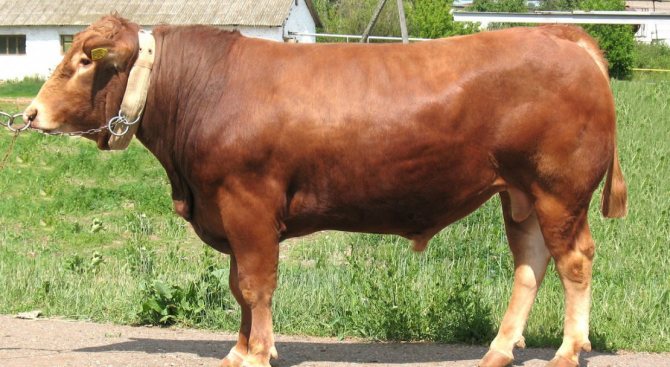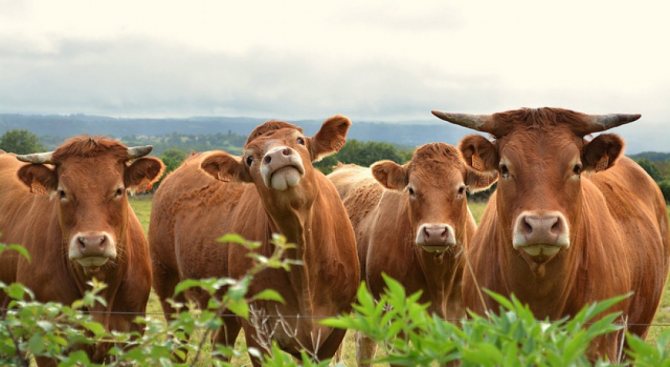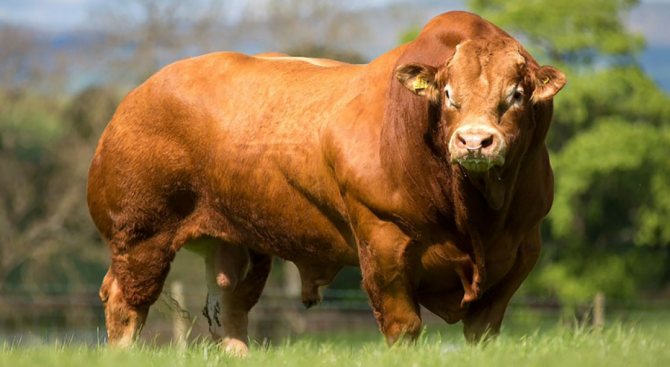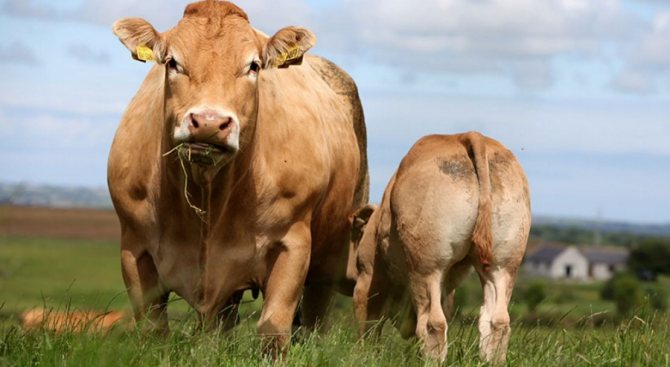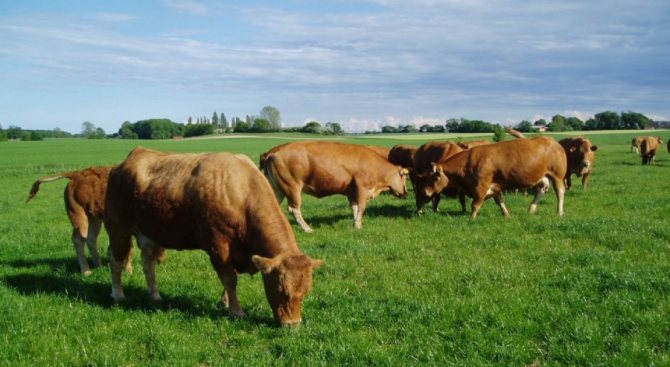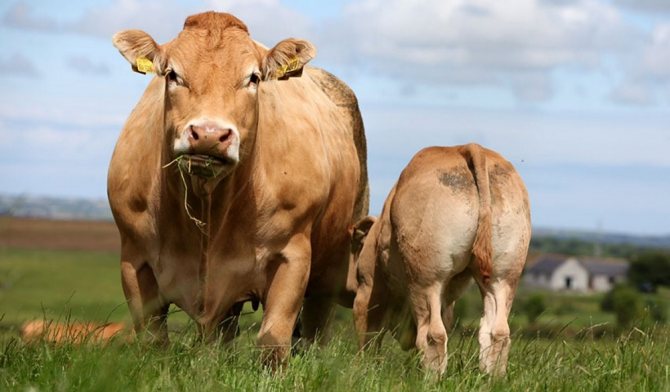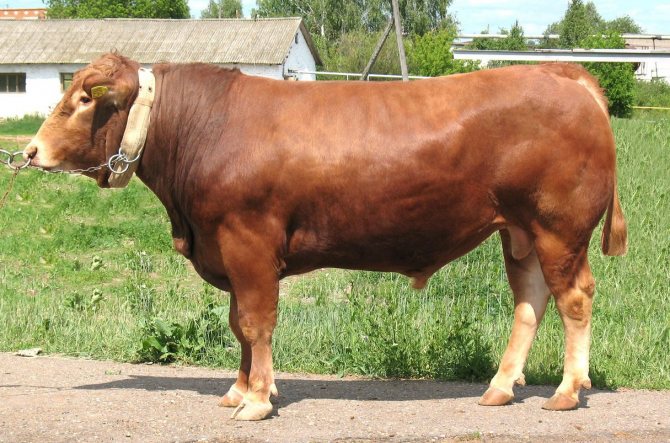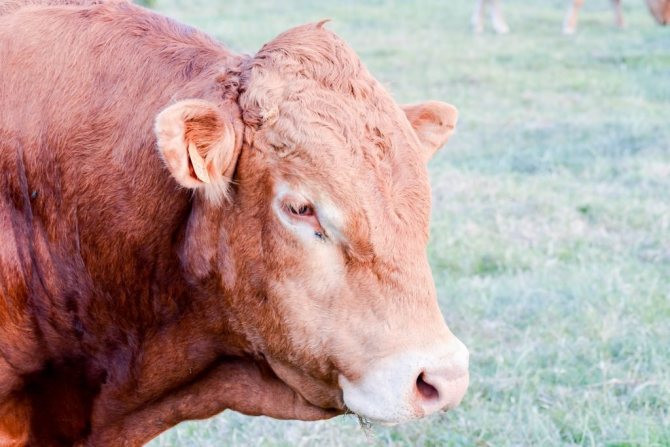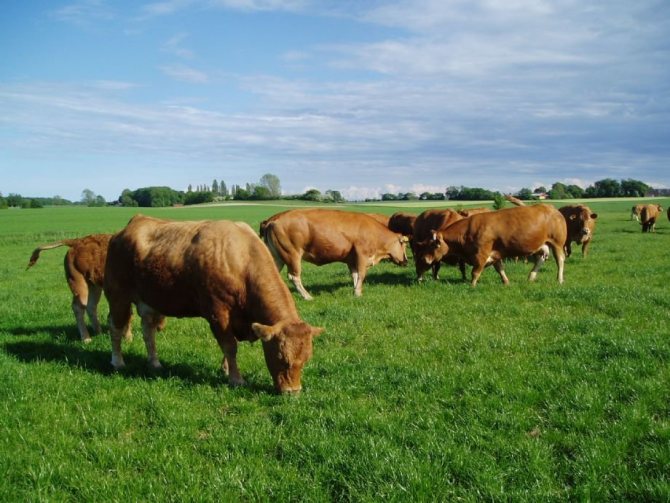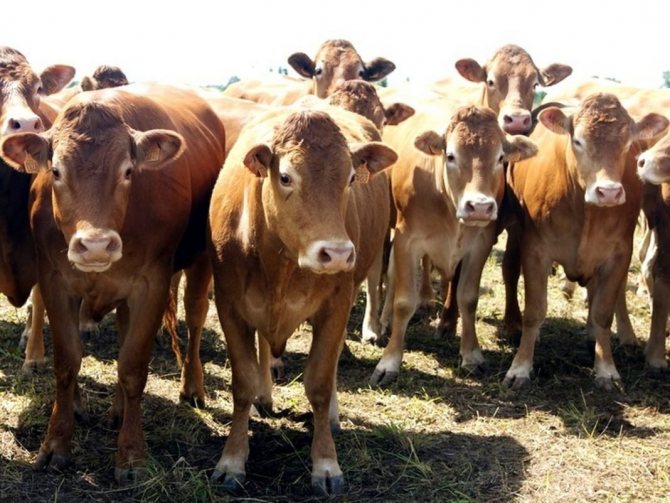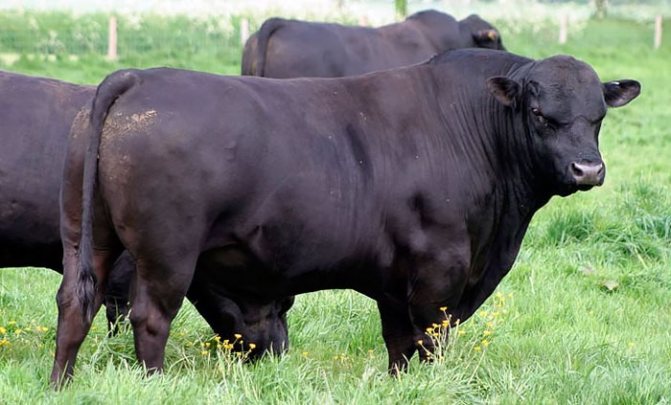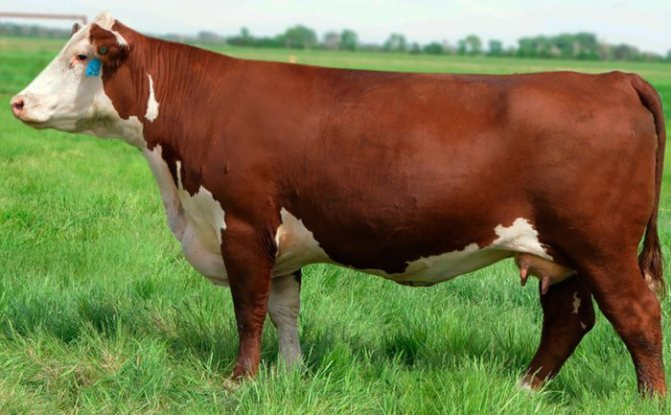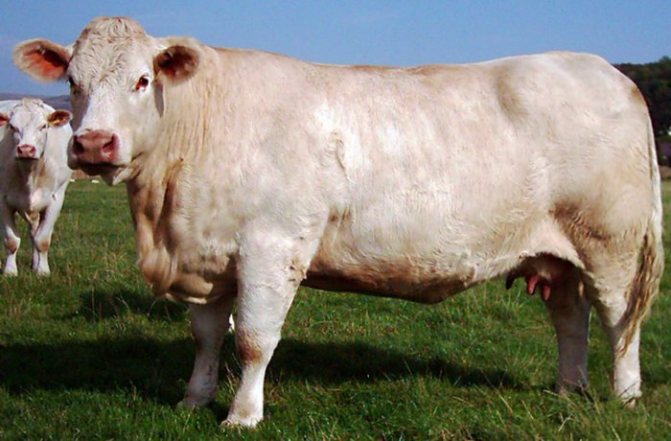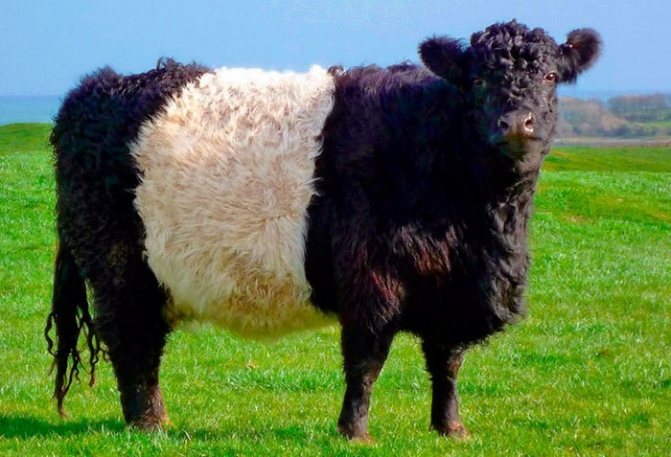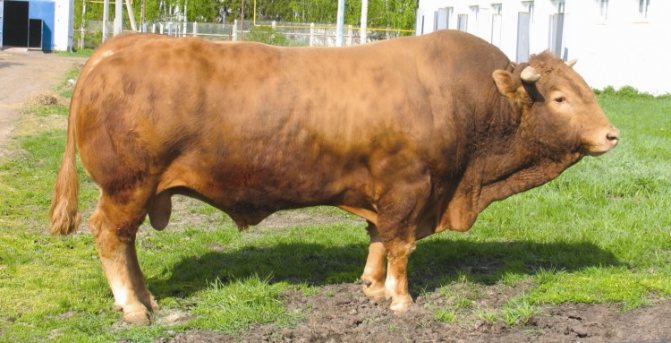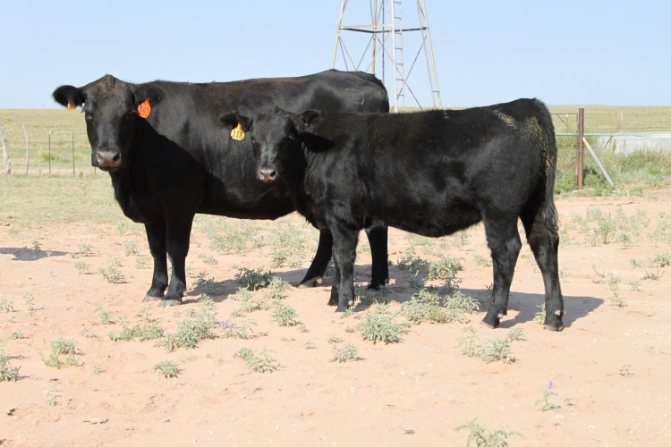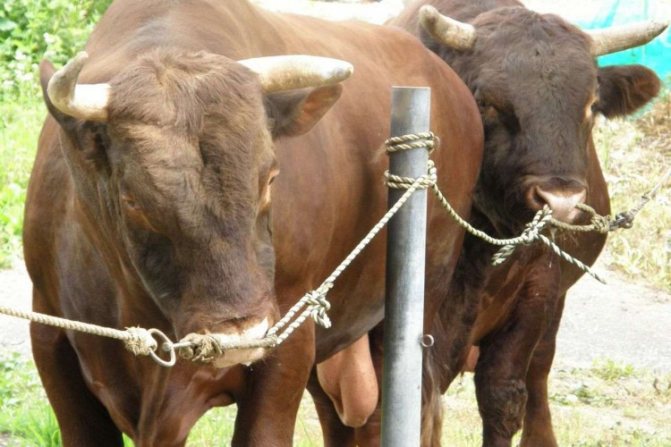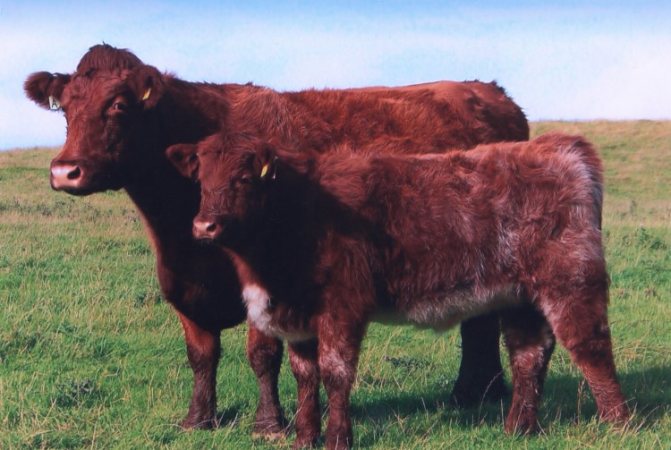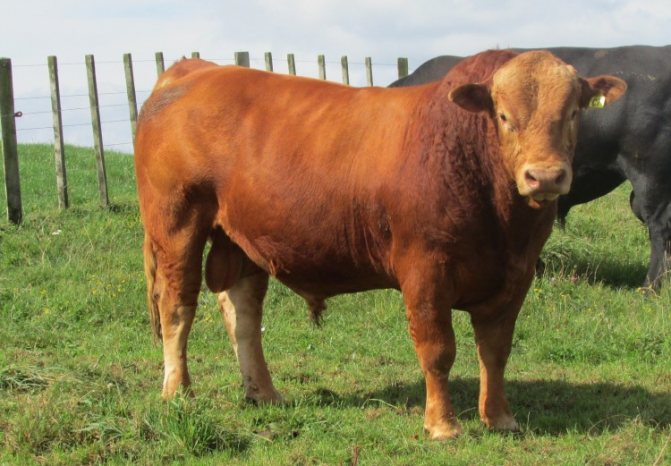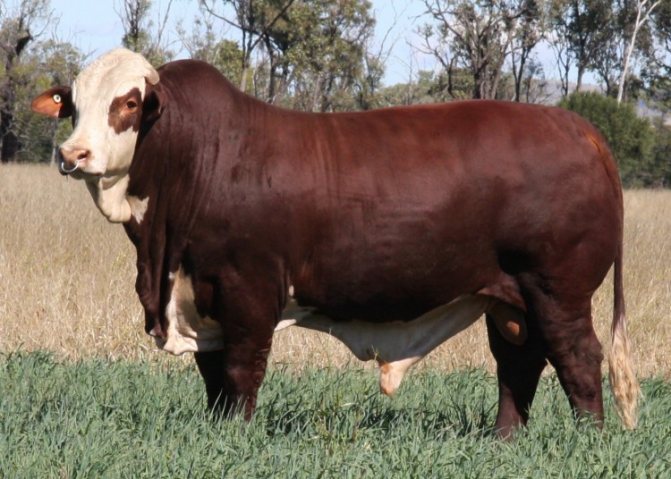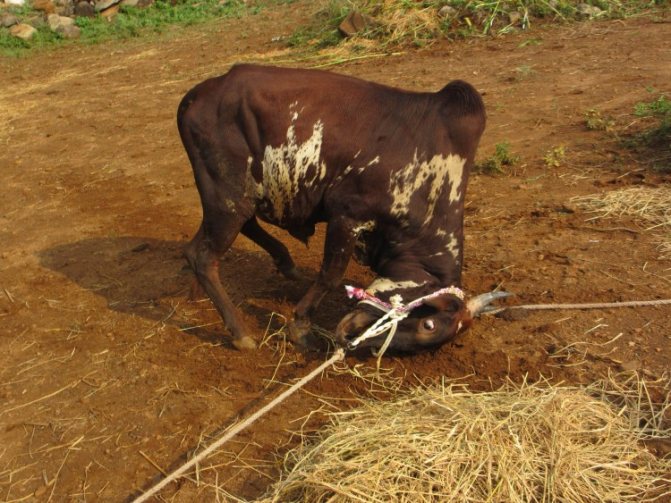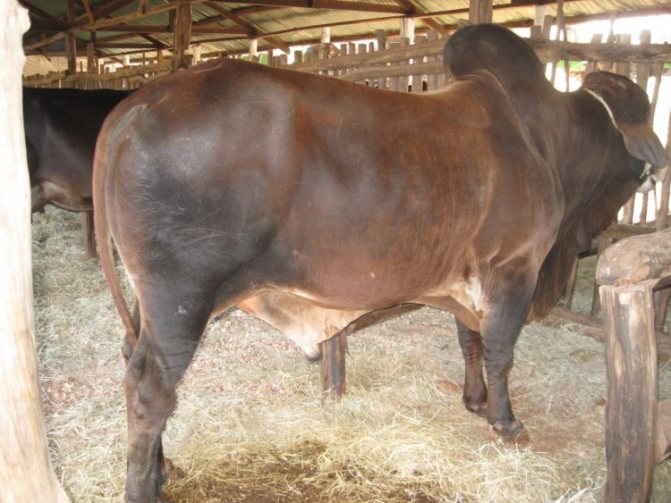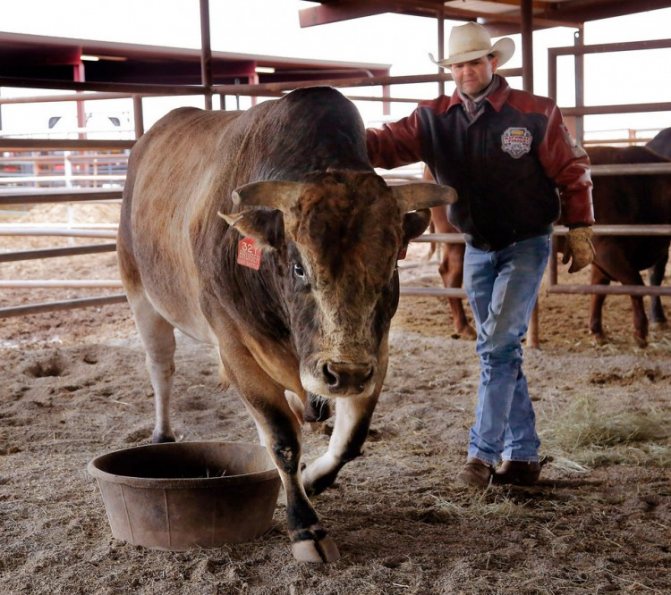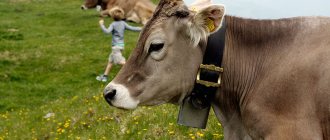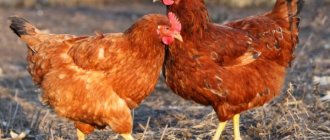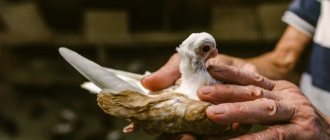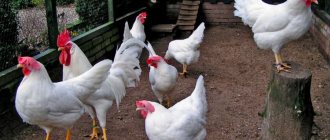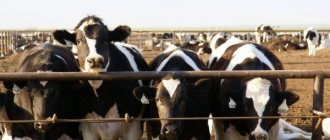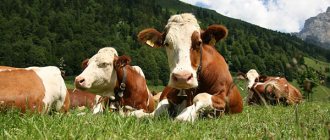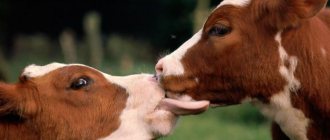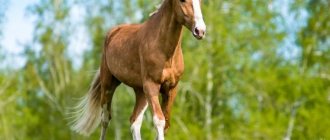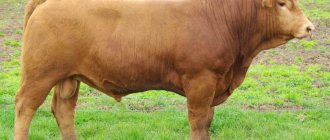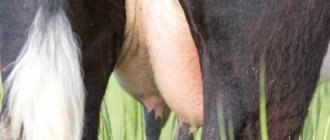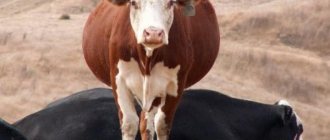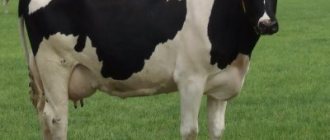The cow is one of the most sought-after farm animals. More than a thousand breeds of cattle are known in the world. Among them, there are both meat and dairy varieties. From the names it is immediately clear what exactly the first and second categories of cows are bred for. There are also meat and dairy breeds from which farmers get both meat and milk.
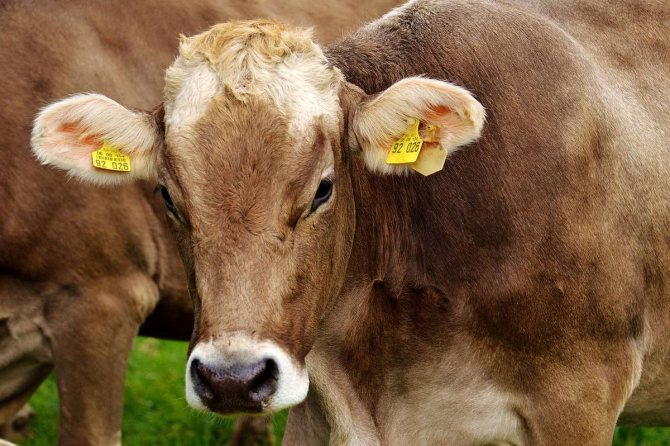
When starting a farming business, it is important to define tasks. In accordance with this, you should choose the breed of cattle (cattle). When it comes to getting meat, then you should get beef cows. If you need a large amount of milk, you must stop at one of the dairy breeds.
As mentioned above, several hundred breeds of cows are known today. There are about 70 varieties in Russia. Most of the cattle living in our country belongs to the dairy category. This situation has developed historically. The predominance of dairy breeds in Russian farming is due to the short summer period and long winters.
A similar picture is observed in many regions. Due to the lack of succulent feed, it is difficult to maintain the breeding of beef breeds. In winter, very large sums of money had to be spent on food for the cows. Currently, farmers use foreign practice to raise beef cattle. There are also effective own developments.
Hereford beef breed
In Russia, animals of this species are widespread almost everywhere, but most of all they are popular in the European part of the country. Their meat is considered "marble" and corresponds to the highest taste characteristics. With sufficient nutrition, males reach a weight of 1000-1300 kg, and females at least 650 kg. Slaughter meat yield is 70%.
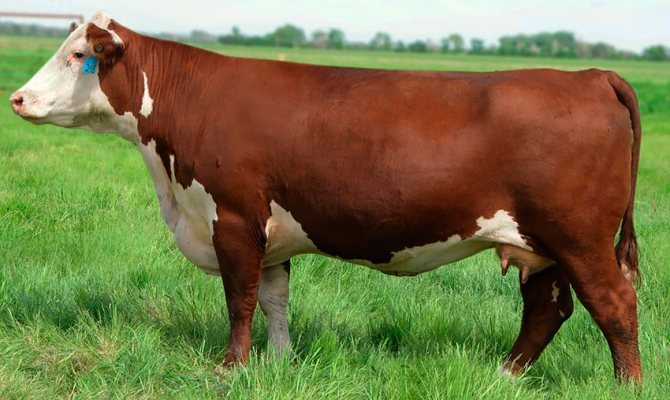

Hereford beef breed
Pros of Hereford Cattle:
- endurance to heat and cold;
- strong immunity;
- excellent indicators of meat productivity;
- unpretentiousness in food and maintenance;
- reproductive function is well developed;
- high growth rate.
Cows have low milk production and often cannot provide food even for their offspring. On industrial farms, they are not milked at all.
General characteristics
Raising animals for the sake of meat began in Great Britain, then this trend began to spread in other countries.
The external data of animals of meat breeds have a lot in common:
- the body is muscular and large;
- small head on a short neck;
- long body;
- wide chest and back;
- short legs;
- big sizes;
- small udder.
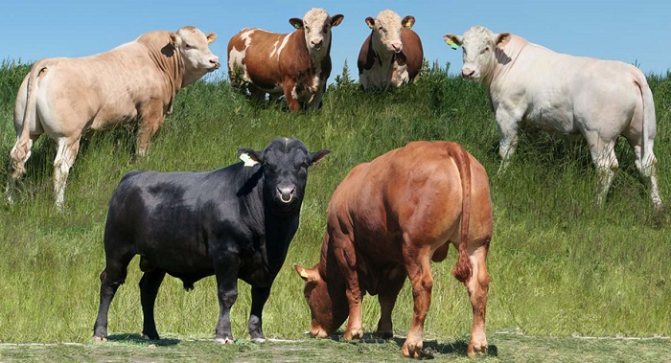

Aberdeen Angus breed
This cattle is widespread in the steppe regions of the Orenburg region, Altai and Krasnoyarsk regions. They are all hornless, have a black color, well-developed muscles on the back, withers, lower back and rump.
The breed is characterized by rapid growth of young stock. Already at 3-4 months, gobies reach a weight of 200 kg. The weight of an adult cow is 550-700 kg, a bull - 700-1000 kg. When slaughtered, the meat yield ranges from 60 to 65%.
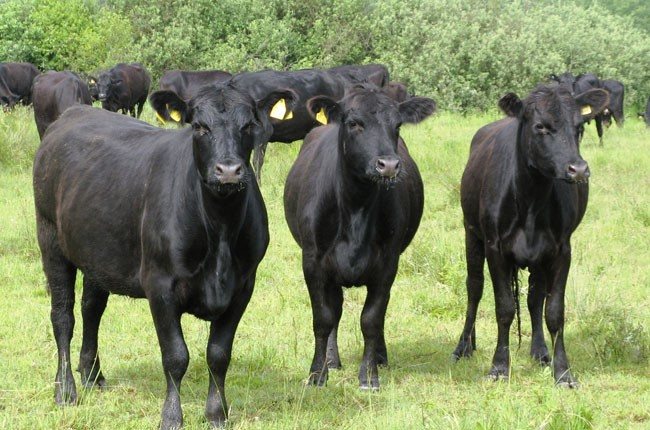

Aberdeen Angus cow
Advantages of Aberdeen Angus animals:
- when crossed with other breeds, meat qualities are transmitted;
- fast puberty;
- easily adapt to different climatic conditions;
- developed reproductive function is maintained throughout life;
- good quality meat.
A significant drawback is the wild nature of the livestock. With long walks, males can attack the owner.
Meat and dairy breeds of cows
There are cattle breeds from which you can get both milk and meat. Such varieties are meat and dairy. It is important to understand that in any case one of the qualities predominates in the breed, it is either more meaty or more dairy. The farmer should decide in advance what is a priority for him, and then make a choice based on this.
Simmental
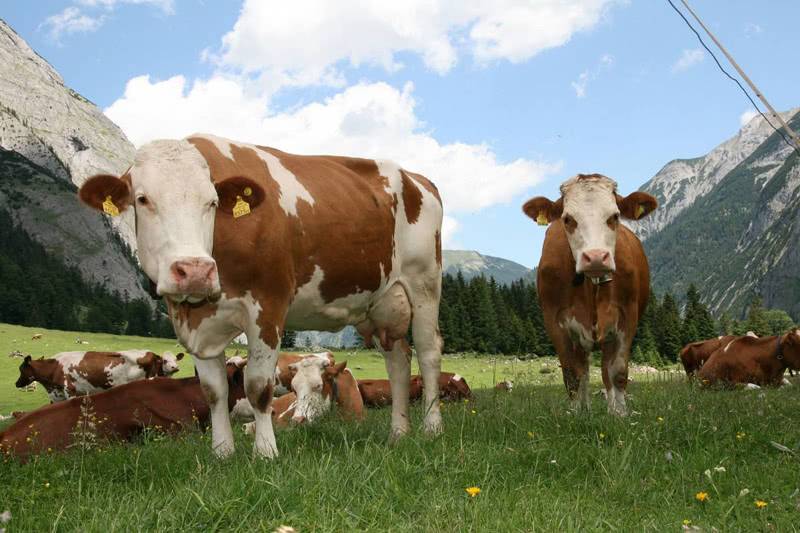

It is the most popular among meat and dairy products. Cows can be fattened up to 600 kg, bulls up to 1000 kg. As for milk, you can easily milk 4-4.5 thousand liters per year. There are known Simmental record holders who gave more than 10 tons of milk per year.
Shvitskaya
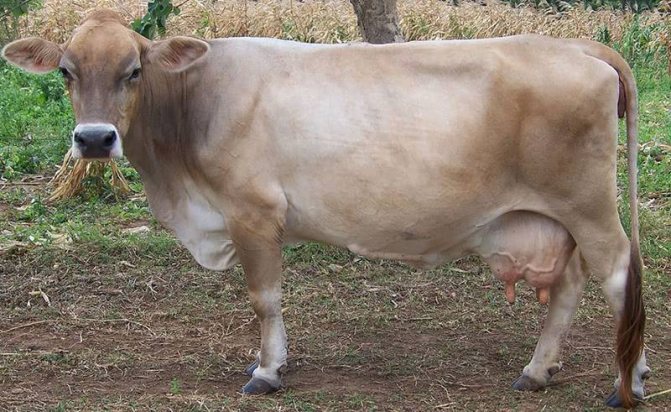

The breed developed in Switzerland quickly became quite popular. This is due to the stamina of the cows and their rapid growth.
Swiss cattle can be fattened up to 600-800 kg. Also, cows are characterized by a milk yield of 3-3.5 tons per year. The fat content of milk is at a good level, at 3.8%.
Bestuzhevskaya
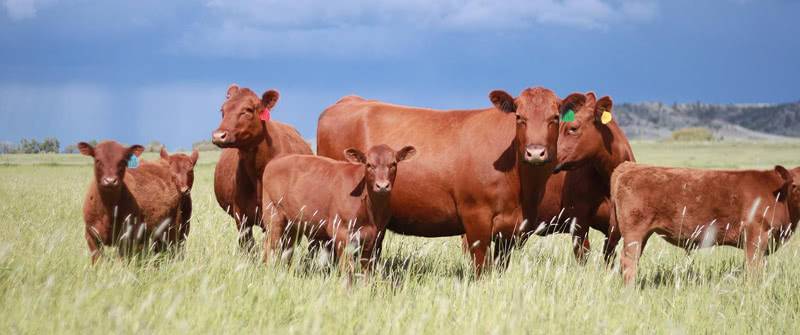

The Bestuzhev cows were bred in Russia by crossing several breeds. Representatives of this variety have increased endurance and can eat roughage. This reduces the cost of keeping cows.
Adult cattle weigh about 800 kg. The finished milk yield is 5 thousand liters. Milk fat content 3.8%. If you feed a cow with a balanced and high quality feed, then the fat content increases to 5%.
Galloway animals
Strong cows of short stature have developed muscles and medium fat deposition. The breed is widespread in Siberia due to its unpretentious maintenance and endurance. The herd perfectly adapts to year-round pasture grazing.
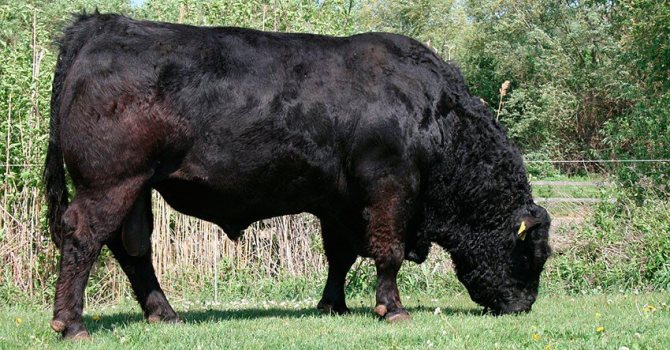

Galloway bull
The meat contains the optimal amount of fat and has excellent taste characteristics. During slaughter, the specific gravity of the pure product reaches 62%. Calves weigh up to 30 kg at birth and are fast growing with daily weight gains of 800 grams. Optimal weight gain occurs on solid feed, with minimal use of concentrates in the diet.
Belgian
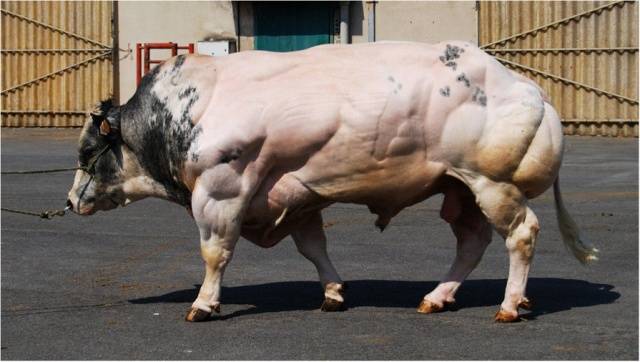

This best beef breed of cows came about by accident. In the genotype of ordinary cattle, as a result of the mutation, the gene responsible for limiting the growth of muscle mass has been “broken”. No genetic engineering was used. A similar phenomenon exists in dogs.
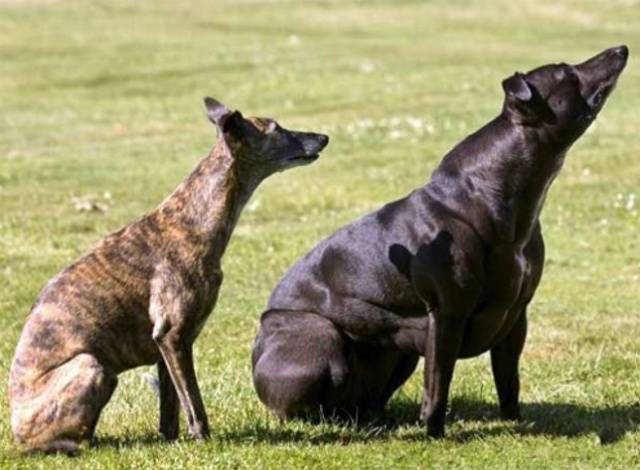

Both dogs are whippets, but the black one lacks a gene that limits muscle building.
Exactly the same mutation occurred with the Belgian cattle. But if Whippet Wendy is rejected from breeding, then with cattle everything happened the other way around. The breeders seized on such a great opportunity and perpetuated the mutation.
Photos of the Belgian beef cattle breed are impressive.
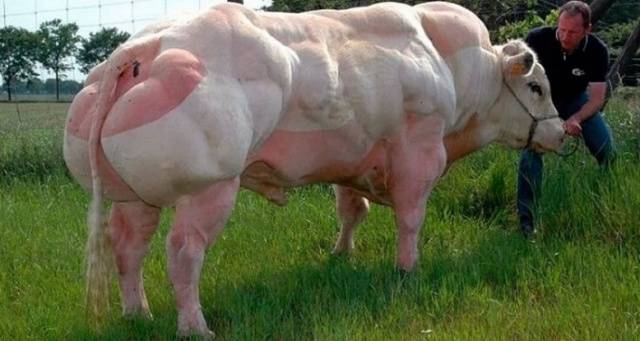

The question arises as to how these livestock can reproduce. But in animal husbandry, only artificial insemination has been practiced for a long time. The queens of this breed are not able to calve on their own and they undergo a cesarean section. One uterus can withstand 6-10 operations.
These bulls require special conditions for keeping. They cannot gain weight on pastures like normal. They are kept in boxes with access to a small corral. But the advantage of this breed is in its low-fat dietary meat. Living organisms are designed in such a way that it is more profitable for them to store fat than to build muscle. In the case of a “broken” gene, the body, on the contrary, “refuses” to accumulate fat, “giving preference” to muscles.
Interesting! Recently, this beef breed of cows was brought to Russia.
But it is unlikely that Belgian cattle will ever appear in private farmsteads due to the difficulties with breeding.
Kazakh white-headed breed
Obtaining meat from this cattle occurs in this way: most of the time the animals spend on pastures, the herd is brought into the stall only in the cold season, fed with high-quality feed for cows, with the addition of vitamin and mineral complexes. The cows are not milked after calving, because all the milk is fed to the calves. With the right content, the weight of one-year-old gobies reaches 400-500 kg. The meat yield is 60%.
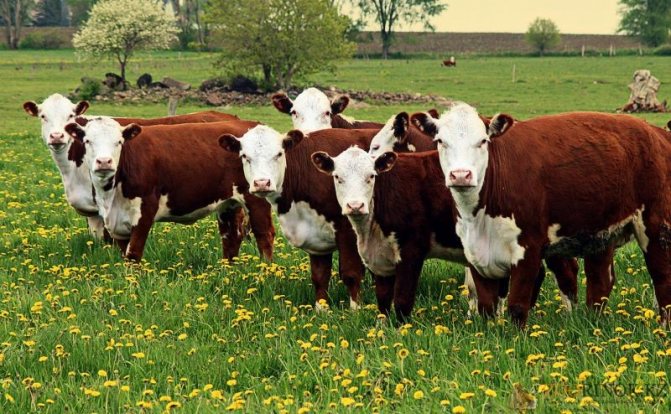

Kazakh white-headed breed
The advantages of the breed are:
- endurance and good acclimatization;
- fast weight gain;
- minimum food costs;
- very tender and juicy meat due to streaks of fat;
- disease resistance;
- early maturity.
A large number of livestock are located in the middle Volga region.
Dairy cows
Dairy cows are distinguished by high milk yield. The average volume of milk produced per year is 3-5 thousand liters. In some breeds, it even exceeds 10 thousand liters.


Watch the video on our YouTube channel:
Dutch
Is the ancestor of the dairy direction. She can also be safely called the best representative of this category. As a result of breeding, the breed has become even better, their productivity has increased.
A Dutch cow can produce up to 4.5 thousand liters per year. excellent milk. It contains up to 4% fat.
There are three types of Dutch women:
- Frisian;
- groningen;
- Maas-Rhine-Isel.
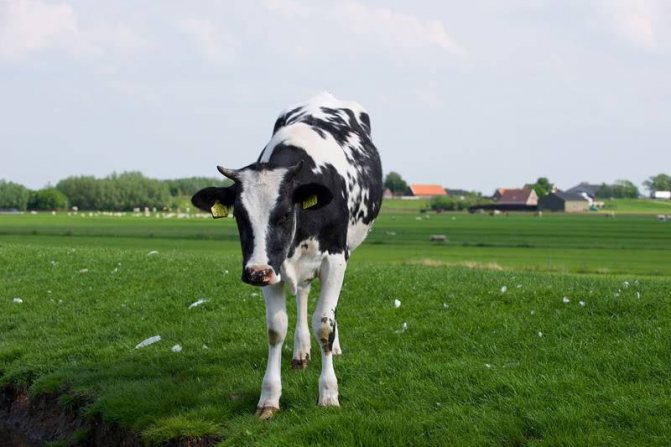

Dutch cow (Friesian)
The listed subspecies differ in color. Frisian has a black and variegated color. It is this variety that is the most popular and first comes to mind when the Dutch breed is mentioned. The rest of the subspecies have a red color in color.
Ayrshirskaya
The history of this dairy breed goes back to the distant past, it was recognized as independent back in 1862. The breed was bred in Scotland, in the area that gave the name to the variety.
The advantage of these cows lies in their successful adaptation to the harsh conditions. For example, the Ayrshire breed is successfully bred in Finland. Cows are not overweight, with an average weight of just over 500 kg. More than 8 thousand liters are obtained from the representative of the Ayrshire breed. in year.
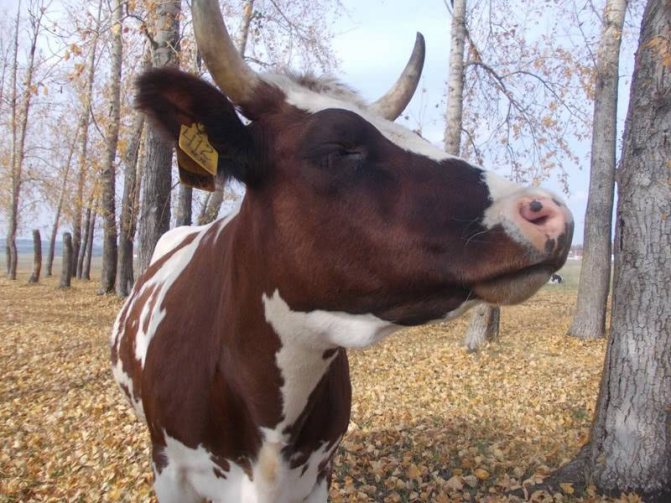

Ayrshire breed
The Ayrshire breed has a feature that distinguishes it from all others - curved lyre-shaped horns.
These cows mature very quickly. They can give birth to a calf as early as two years old.
Holstein
Holstein cattle are known all over the world. It has several subspecies, differing in milk yield. This is due to the fact that cows adapt to local conditions and gradually change.
On the territory of Russia, there are black-and-white and red-and-white Holstein cows. The first color is predominant. Black-and-white ones give more milk than those with red-and-white coloration.
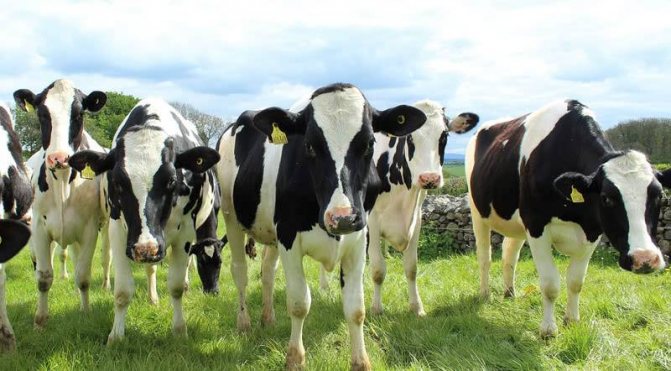

Holstein breed
Interesting! In Israel, up to 10 thousand liters per year are obtained from black-and-white Holstein cows.
Jersey
Jersey cows produce the richest milk. The fat index is 5-6%. In some cases, it can reach 7%. At the same time, the annual volume of milk is not very impressive. Jersey cow gives about 3 thousand liters. in year. The main advantage of the breed lies precisely in the increased fat content of milk.
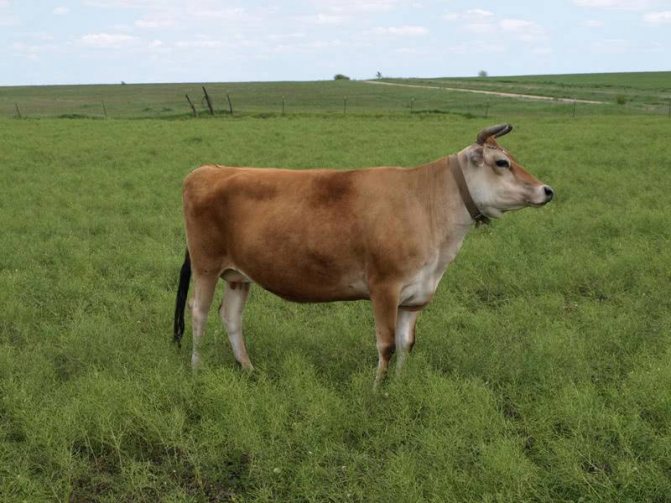

Jersey cow
The breed is named after the island of Jersey, where it was selected for the fat in milk.
Cows are most often red in color. There are also brown individuals. Spots are often present on the coat.
In Russia, Jersey cows are usually not bred, but bulls of this breed are used to increase the fat content of local cattle milk.
Red steppe
Known for more than two hundred years, originates from the Ukrainian steppes. This variety is excellent for breeding in hot and arid regions.For red steppe cows, this climate is not a problem. The breed is characterized by a bright color, and the red color can have different shades. White spots are common.
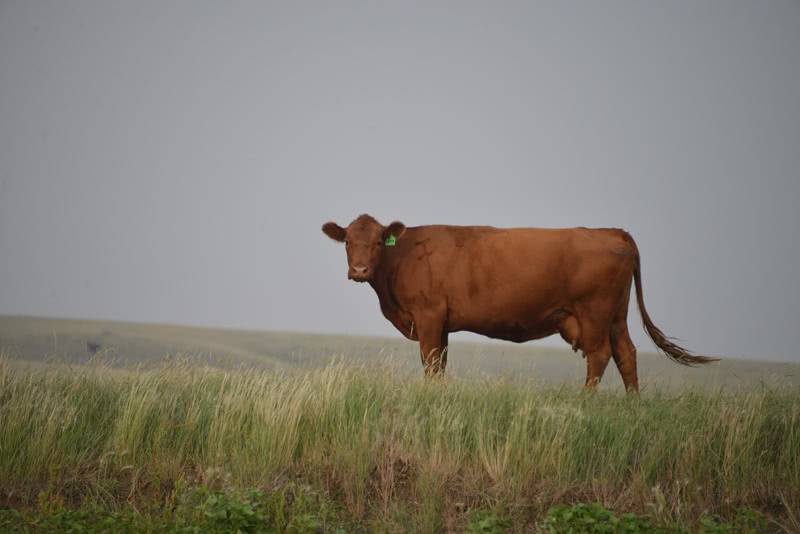

Red steppe breed
Red cows weigh just over 500 kg. Light weight and poorly developed muscles clearly indicate that the breed is dairy. Breeders are currently working to improve the breed's constitution. They also try to increase the fat content of milk.
Kholmogorskaya
Kholmogory cows were bred on the territory of Russia through folk selection. In the 18th century, they tried to cross them with Dutch cows, but they did not see a positive result. In the future, crossing continued, and as a result, a good breed was obtained, perfectly adapting to harsh conditions.
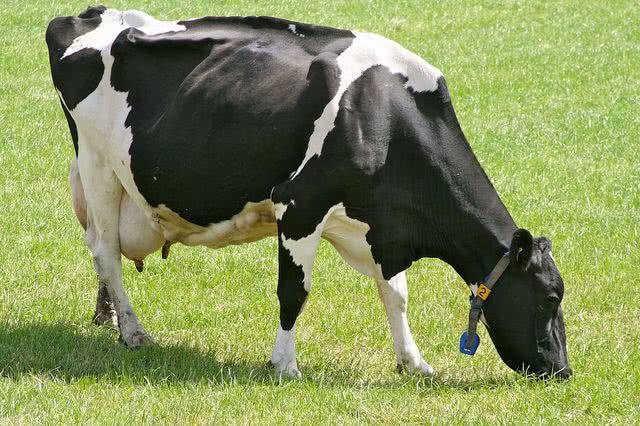

Kholmogory breed
If Kholmogory cows are well looked after, then milk yield will be more than 6 thousand liters. in year. Burenki have a large udder, which is evidence of belonging to the dairy breed. The weight of the animals is not too impressive.
Yaroslavl
This breed is another type of cattle bred in our country. They are usually black in color.
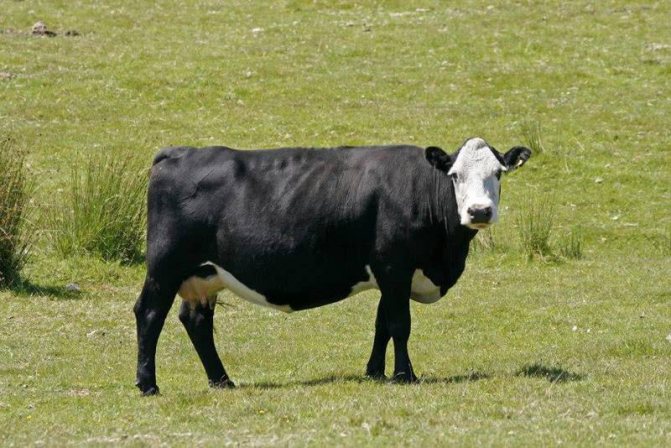

Yaroslavl breed of cow
Yaroslavl cows perfectly adapt to even the most severe living conditions. They also have impressive milk yields. On average, "Yaroslavka" gives about 3 thousand liters. milk, but it is in this breed that record-breaking cows are often found. With good feeding and care, the annual milk yield rises to 5.5 thousand liters. In isolated cases, it exceeds 11 thousand liters.
Breed Santa Gertrude
Cows of the Santa Gertruda breed can easily tolerate a hot dry climate, are very physically hardy and have strong immunity. The meat properties of bulls are strongly expressed. Their live weight can reach 1300 kg and the lethal yield is 65%.
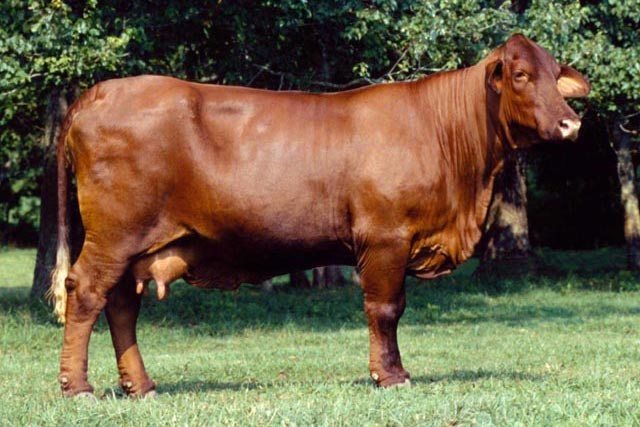

Cow breed Santa Gertrude
In Russia, livestock has become widespread in the southern regions due to its high economic efficiency. Pasture nutrition allows you to achieve a daily weight gain of young animals of 1100-1200 grams.
The characteristics of the animals are as follows:
- rarely get sick with piroplasmosis;
- you can give roughage;
- meat of good taste;
- hardy.
The disadvantage of this species is the low fertility of cows.
Limousin
The Limousine breed was created in the west of the central region of France in the province of Limousine. She is over 150 years old.
The color of the cattle is red, from light to dark tones. Around the nasal mirror and eyes the hair is light, in the form of rings. The body structure is harmonious, with well-defined meaty forms. Animals of this beef cattle breed are valued for their unpretentiousness, endurance, good use of pastures, high fertility, excellent quality of carcasses and meat.
In France, the weight of newborn bulls is 36-42 kg, heifers - 34-38 kg, bulls - 1000-1150 kg, cows - 580-640 kg. The live weight of bulls for weaning at 7-8 months of age is 260-300 kg, heifers - 240-260 kg.
limousine bull
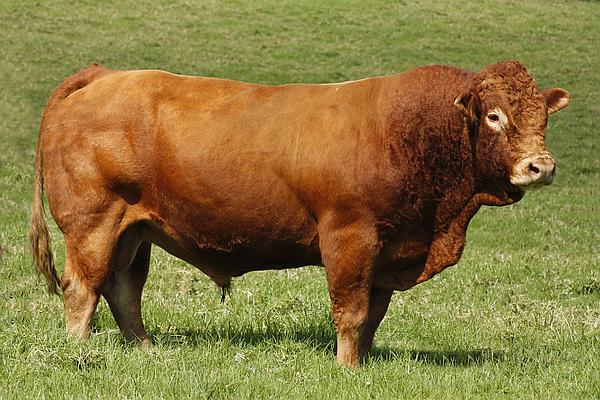

limousine calf
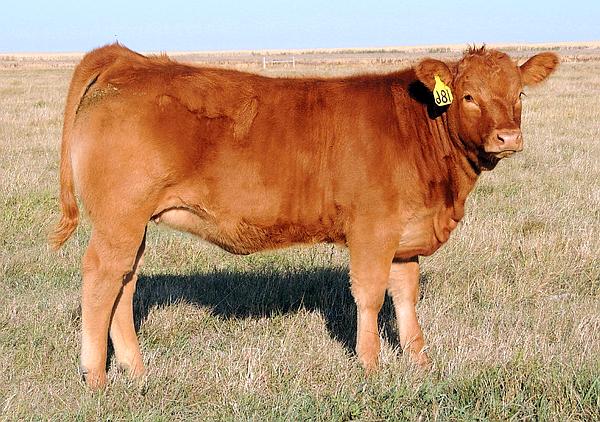

The breed was brought to Russia simultaneously with the Charolais, the live weight of cows is 550-580 kg, newborn calves is 32-40 kg. The calf yield is 90-95%. The live weight of calves for weaning at 7-8 months is 220-240 kg. The average daily gain of bulls from 8 to 15 months of age was 1050-1100 g, live weight at 15 months reached 430-440 kg. At the final fattening, the gains were equal to 1100-1300 g. Yielding to the Charolais breed in terms of growth energy, the young limousine breed has advantages in slaughter and meat qualities. Slaughter output of limousine bulls - 63-64%. The meat content in the carcass is 82-83%. For 1 kg of bones there are up to 6.5 kg of pulp. Any livestock breeder will be pleased with this amount of valuable produce. The fat content in meat is 7-10%, protein is 19-20%.
Animals of the Limousine breed are second in number in France, successfully competing with the Charolais in terms of distribution in the world.Both breeds are widely used in crosses with dairy cattle and in the creation of new breeds of beef cattle.
Kalmyk meat breed
Farmers praise this type of cattle for its high feeding rates. Born calves gain weight intensively (up to 1 kg per day) and already weigh 250 kg in six months. Adult gobies weigh from 600 to 1150 kg, and cows at least 450 kg. Slaughter output of products ranges from 55 to 65%. The meat is juicy and contains fatty inclusions.
The advantage of the breed is the ability to accumulate subcutaneous fat, even on the scantiest feed. During the period of grazing, cows can stay in the scorching sun for a long time without health consequences. Because of these characteristics, animals have spread throughout the country.
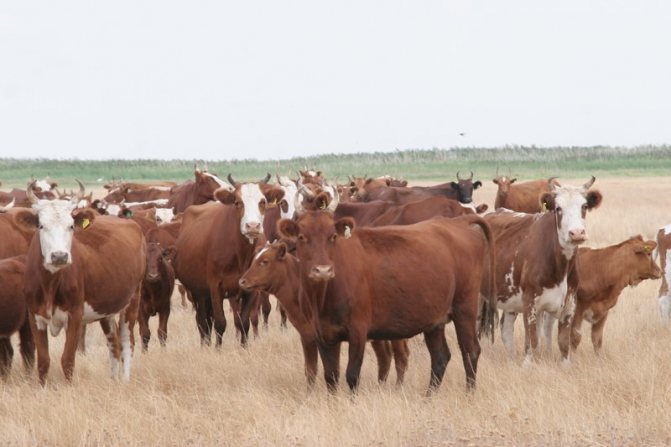

Kalmyk beef breed of cows
The advantages among other breeds are:
- the ability to quickly restore weight after a long winter;
- short pregnancy period;
- unpretentiousness in food;
- easy calving without complications.
Good weight gain of livestock is provided by the addition of mineral complexes, chalk and salt. Cows also need to be provided with sufficient water when walking (up to 50 liters per adult head). Grain-forb, fescue and feather-grass meadows are used for pastures.
Charolais
Charolais cattle were bred in France 200 years ago and during this time have spread to more than fifty countries of the world. Animals of this breed are early maturing, which is manifested in a high growth rate and the ability to intensive fattening up to 2 years of age. Noting the remarkable features, one cannot but mention its main drawback: difficult calving, which is caused by the large size of the calf and its large weight.
Charolais cattle have a light color (from yellow to white). Animals have a strong constitution, they have a well-defined meat type. They have a small head with small horns. Cattle of this breed of cattle have good conformation characteristics: height at the withers of cows 132-135 cm, bulls 141-145 cm; the chest is wide and deep, the back is wide in the lower back, the bones are strong, the legs are well set, the back of the body is well formed.
Charolais chick
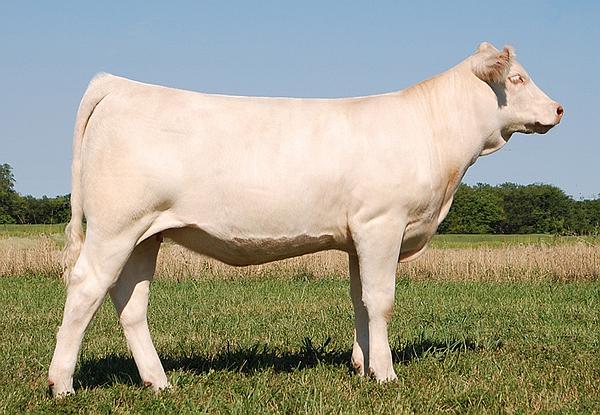

Charolais bull
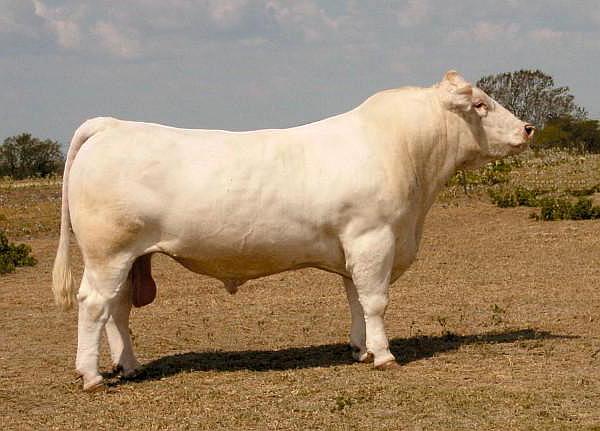

As an exterior defect, there is a bifurcation of the shoulder blades, an unevenness of the back and a roof-like sacrum. The live weight of full-grown cows is 500-600 kg, bulls - 1200-1250 kg.
cow with calves of the Charolese breed
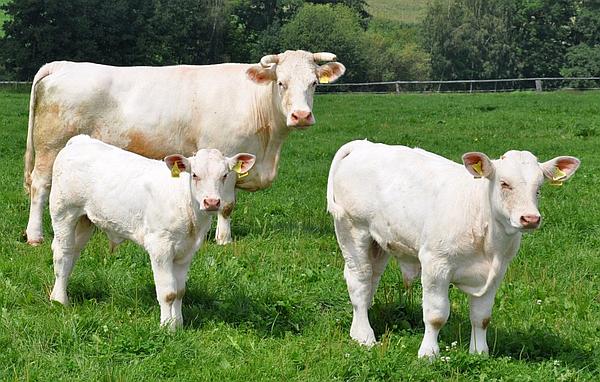

Cows have good reproductive ability, and milk production is up to 2000 kg of milk per year. Calves are reared on suckling up to eight months, by this age the heifers have a live weight of 205-215 kg, gobies 220-230 kg. Average daily gains are 1000-1800 g.
With a relatively low bone mass in carcasses, intensive fattening makes it possible to obtain super-heavy carcasses with a large amount of muscle tissue at a sufficiently high yield of high-grade meat per 1 kg of bones. The quality indicators of meat are quite high. For example, the ratio of protein to fat is 1: 1, which is most preferred by the consumer.
Mensko-Angevin ladybug
This breed of cattle belongs to the meat sector. Due to its characteristic color, the breed is also called red meadow, although the main shade of the coat is still red. Gobies are distinguished by impressive dimensions, growth can reach a mark above 170 cm, which makes them giants among cattle of the meat direction. The same goes for weight, there is data on a bull weighing about 1650 kg.
Despite their gigantic size, these are quite calm animals with a docile nature, which makes their keeping convenient and comfortable. It is also worth mentioning about the mixed orientation, that is, until the moment of slaughter, you can get decent milk yield from cows.As with most things, the meat tastes great and is considered premium beef by consumer ratings.
Hereford
So we have come to the most popular meat breed in the whole world. At the moment, representatives of this breed can be found on all continents except Antarctica. And this despite the fact that it is almost 4 hundred years old.
This is because the Hereford breed of bulls is quite loyal to any climate and a wide variety of foods. These are not very tall bulls - only 130 cm, and the weight is also not a record one - 1000-1400 kg. But given the fact that they can be bred without any problems anywhere in the world - the breeders are quite happy.
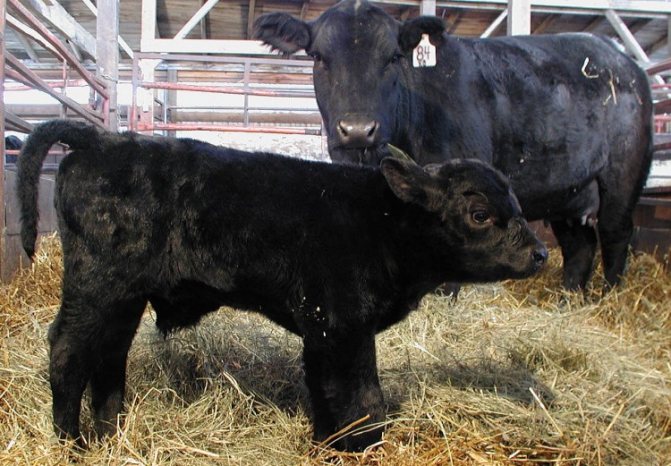

At the same time, they have very tasty meat, from which wonderful steaks are obtained. Perhaps even in a store near your home you can buy meat of this breed. Nearly half of the market for all beef meat worldwide is hereford.
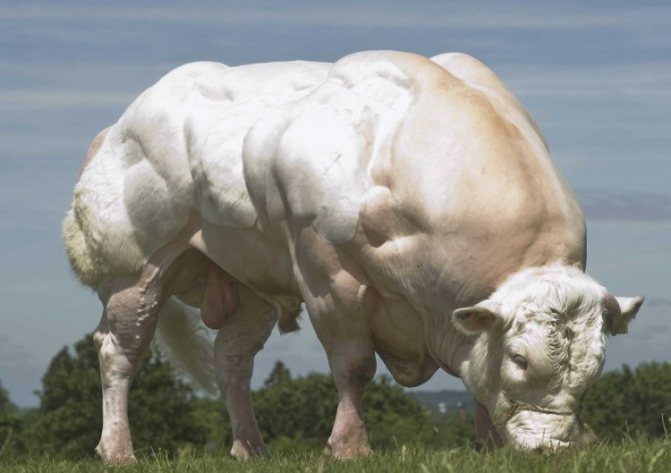

The cows of this breed are not champions at all. They are also more suitable for breeding and for meat, because they can give no more than 300 liters of milk per year. Because of this, calves often have to be fed with artificial mixtures and feed.
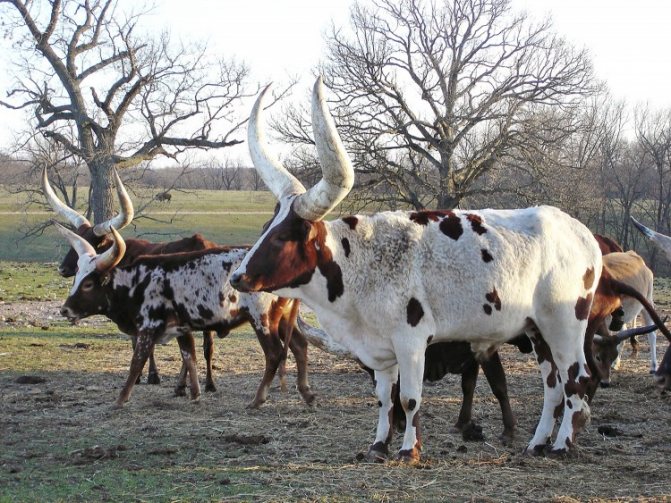

Good breeding bull breeds are rare. Usually they can be seen on small farms of real enthusiasts of this business. But on the other hand, centuries of research and selection have deprived us of the urgent need for purebred breeds.
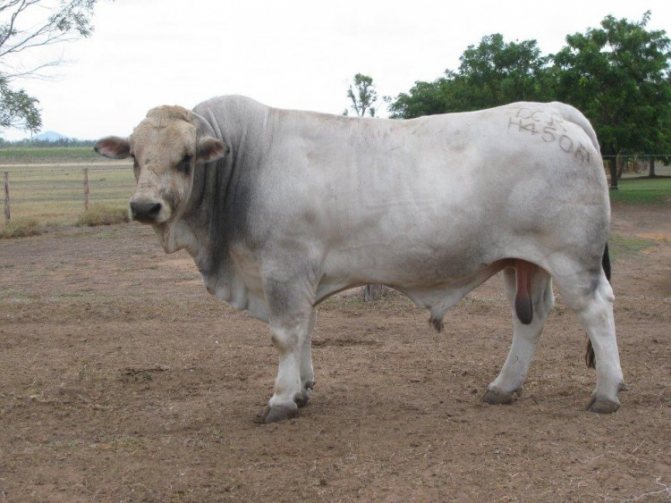

Shorthorn bull
If you have seen a photo of bull breeds, in particular meat breeds, then you understand that not all of them look natural enough.
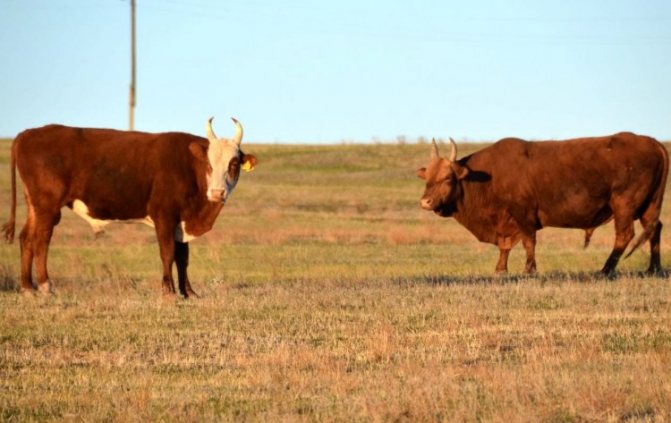

Usually, the breeds that have been bred by humans over the past 50-100 years are more like frequent guests of gyms. However, the Shorthorn bull was bred in the distant 16th century in the territory of modern England.
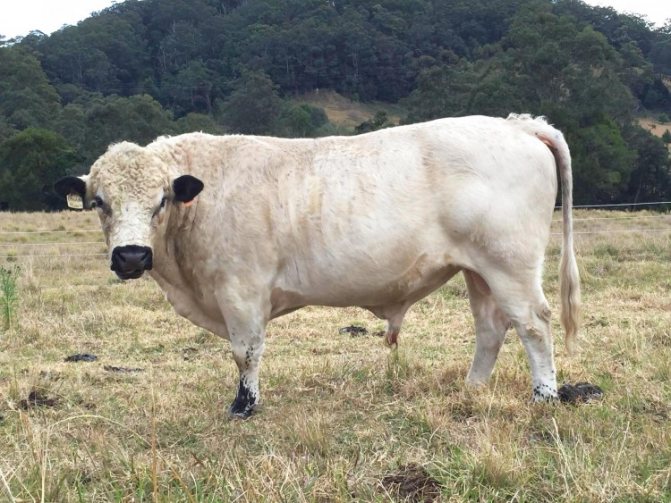

At that time, the British needed new breeds of large bulls that could provide meat not only for the country, but also for the colonists who were experiencing problems with the domestication of wild cattle in the new lands. As a result, one of the best bull breeds in the world was bred, and even now.
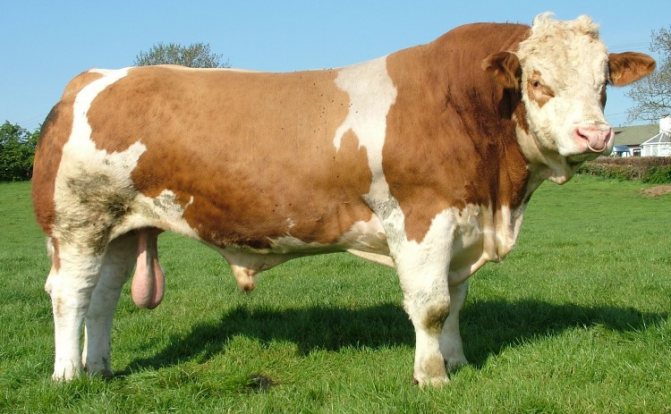

They grow up to 1300 kg, despite the fact that the fat in this mass is only 8%. Of the minuses, one can single out exactingness to the quality of food, and they need to grow for 2-3 years. True, their meat is selected and is in demand in expensive restaurants.
